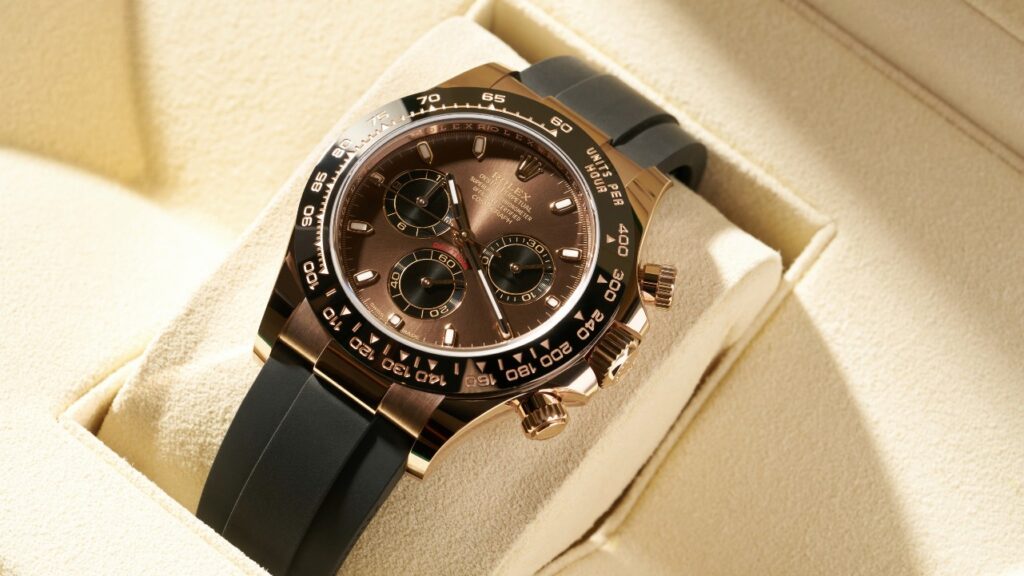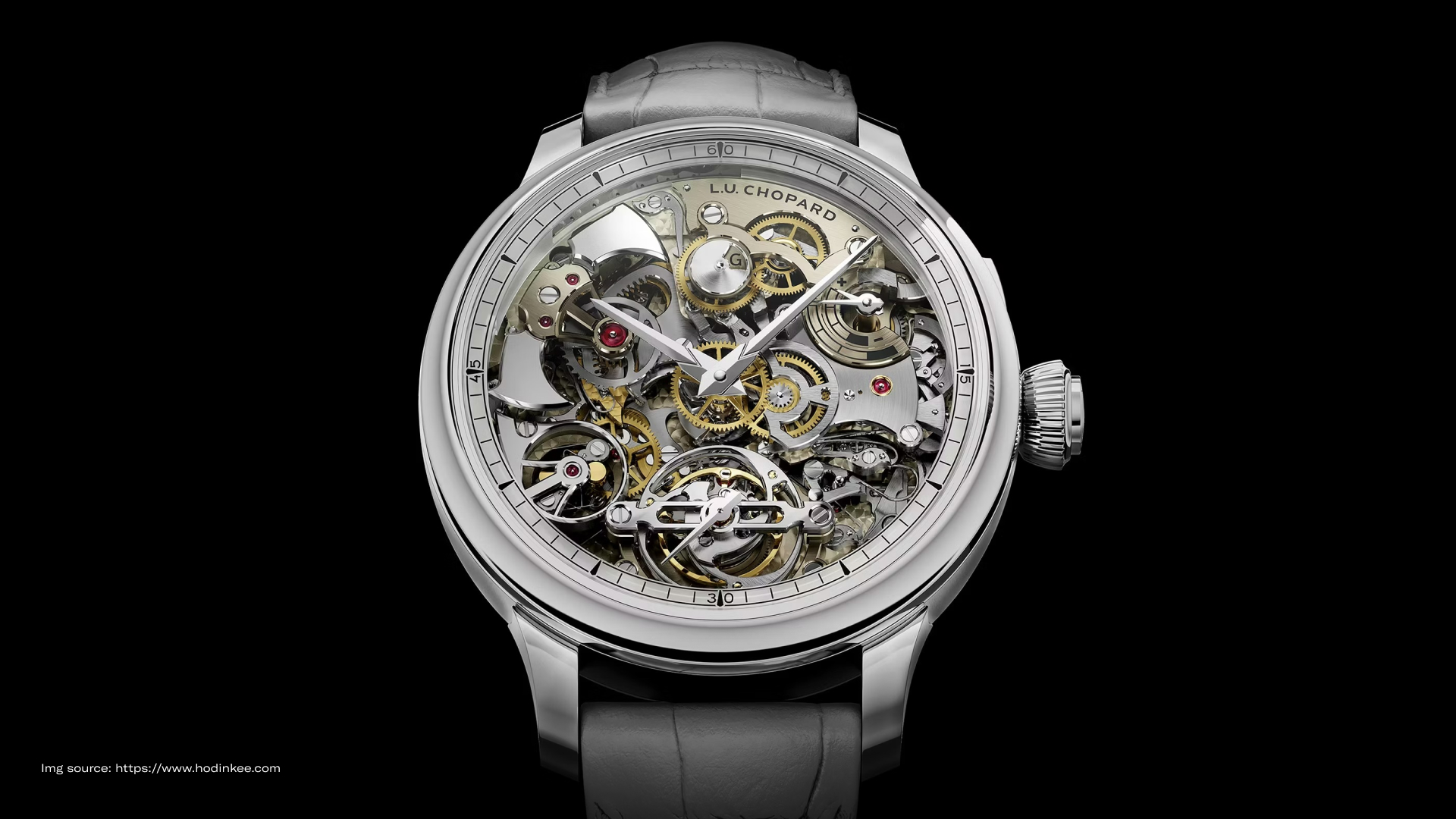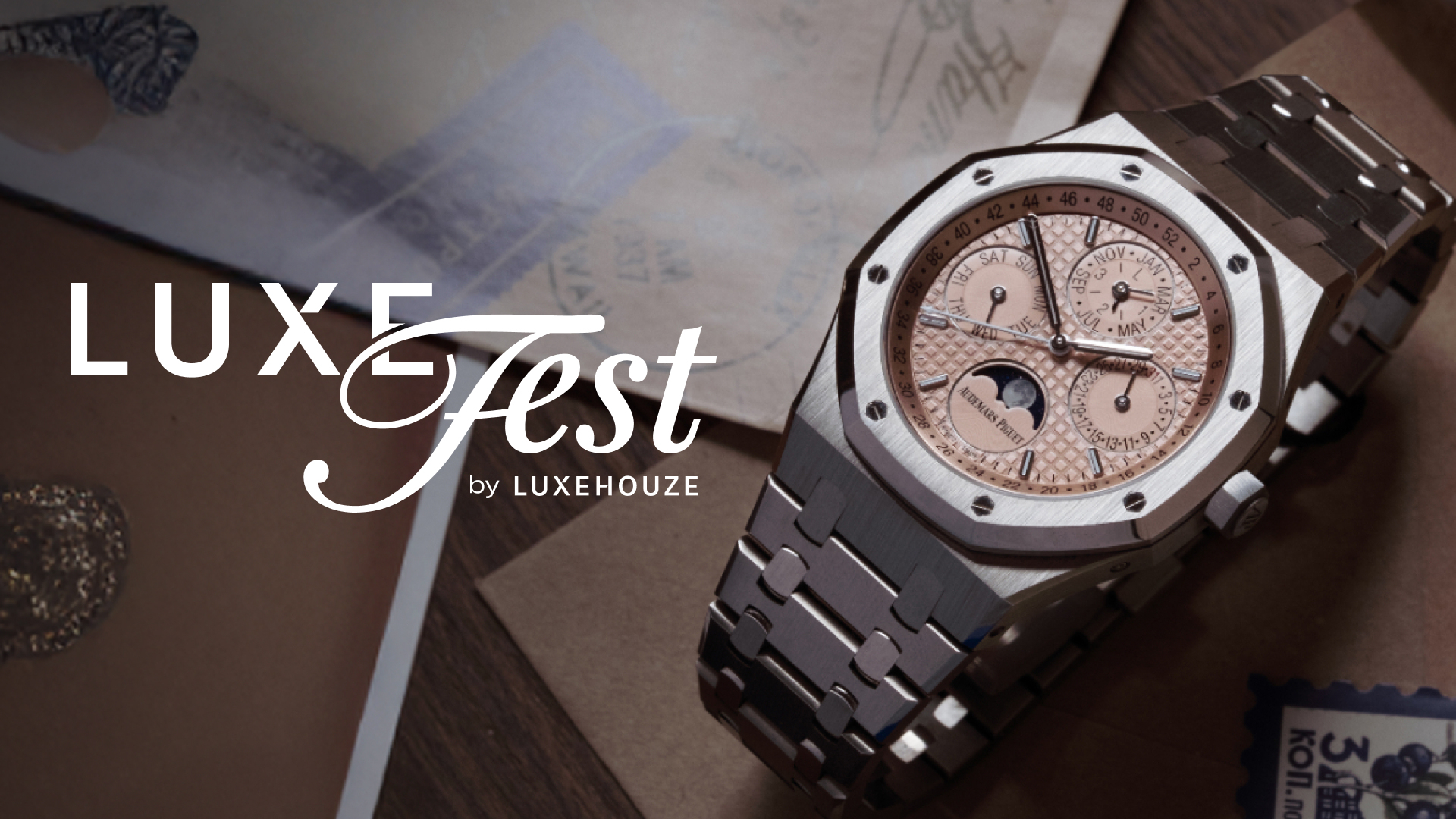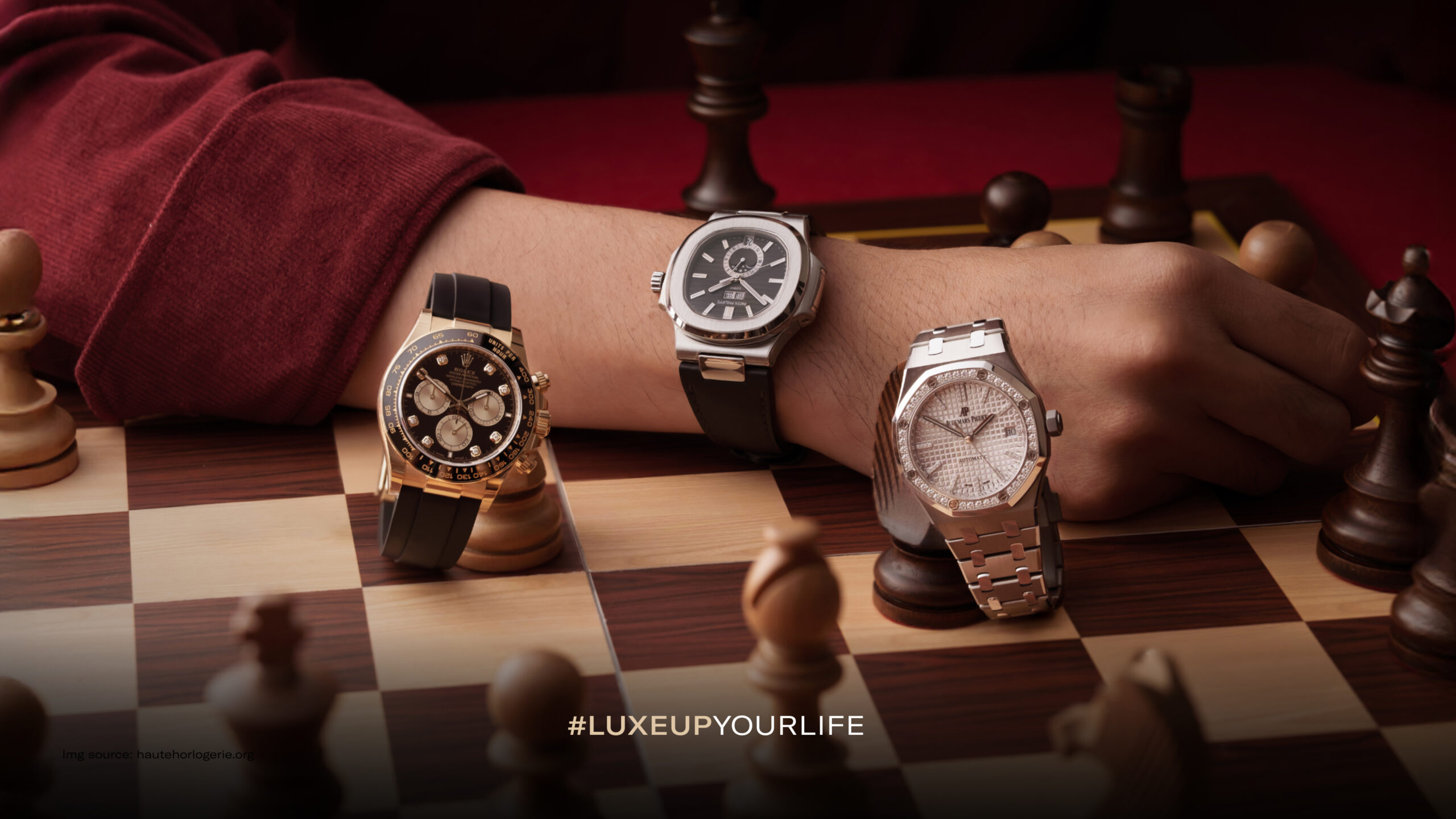Within the extensive Rolex watch lineup, the Rolex Daytona stands out as a genuinely notable collection. Its enduring design holds an enduring appeal, transcending considerations of gender and age.
The Rolex brand itself enjoys widespread acclaim among watch enthusiasts, and it firmly holds its place as one of the foremost luxury watch brands globally. Renowned for its prestige, luxury, and refined timepieces, Rolex has earned a distinguished reputation.
If you’re contemplating the purchase of a Rolex Daytona, we invite you to delve deeper into this collection by perusing the insights presented in this article.
Table of Contents
ToggleThe Origins of the Rolex Daytona
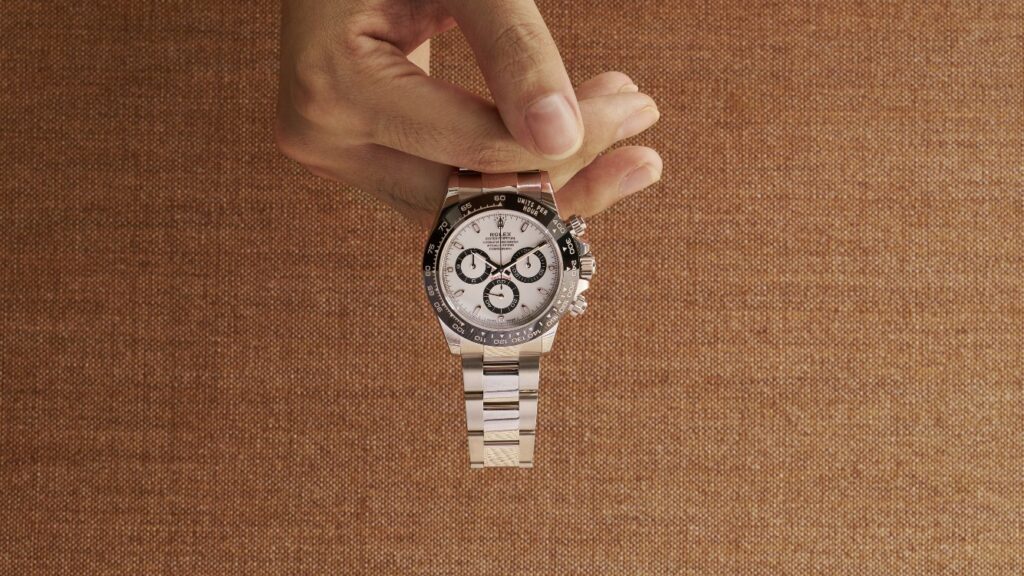
The history of the Rolex Daytona finds its roots in 1963 when Rolex unveiled the Reference 6239. This was a pivotal moment in the watch world, marking the inception of a groundbreaking chronograph explicitly designed for race car drivers.
The primary objective was to provide impeccable timekeeping precision, coupled with the capability to measure speeds reaching up to an astonishing 200 miles per hour.
The name “Daytona” is intrinsically tied to a city in Florida, which, in the early 20th century, started to draw motorsport enthusiasts to its expansive, compacted-sand beaches, making it an ideal location for land speed record attempts.
Rolex’s exploration of mechanical chronographs had already commenced in the 1930s. However, it wasn’t until 1963, with the introduction of Reference 6239, that a distinct identity was bestowed upon their chronograph line of timepieces.
Rolex Daytona Evolution Through The Ages
Indeed, being a watch collection with a rich history, it’s only natural that the Daytona has seen its fair share of updates and changes over the years. So, how exactly has the Daytona evolved?
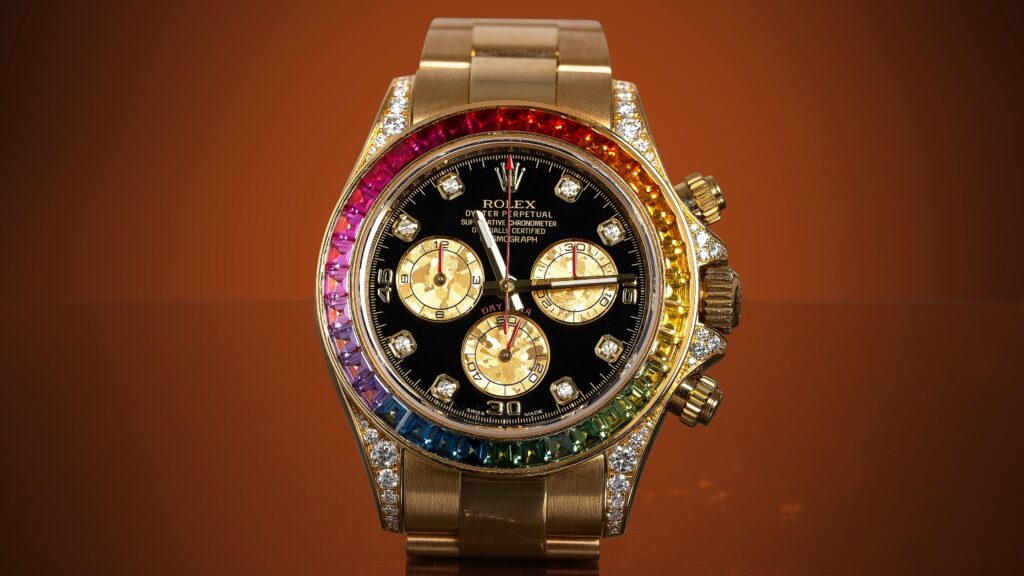
1. 1930: Birth of Mechanical Chronograph Watch
Since the 1930s, Rolex had been diligently establishing a reputation as a producer of versatile sports watches, primarily owing to their resilient “sealed against the elements” Oyster case.
Testimonials from notable figures, such as Sir Malcolm Campbell, who could arguably be considered the brand’s inaugural ambassador, further bolstered their standing in this arena.
During this period, Rolex ventured into crafting its very first chronograph wristwatch, characterized by a solitary push button situated on the watch’s side.
This button allowed users to initiate, halt, and reset a separate second hand, introducing a novel level of functionality to the wristwatch. Rolex sourced the movements for these chronograph models from the renowned company Valjoux.
It’s worth noting that while Rolex had already begun its foray into mechanical chronographs in the 1930s, the name “Daytona” had yet to debut in connection with this particular timepiece style.
Nevertheless, this era marked the initial stages of what would eventually culminate in the emergence of the legendary Daytona.
2. 1963: Official Release Year of Rolex Daytona
It wasn’t until 1963 that Rolex made a significant move by affixing “Daytona” to their line of chronograph watches.
That year, Rolex unveiled the inaugural Cosmograph model, known as the Reference 6239. What set the Reference 6239 apart was its notable feature: a tachometer scale engraved directly onto the metal bezel.
This innovation aimed to enhance the dial’s legibility, and the watch was offered in two distinct styles – one with a black dial and silver counters and the other with a silver dial and black counters.
Notably, during the initial years of production, the bezel bore gradations up to 300 units per hour before transitioning to 200 units per hour.
Interestingly, the Rolex Chronograph, despite its distinctive features, was not immediately bestowed with the “Daytona” moniker. In fact, Rolex initially used the name “Le Mans” in certain advertisements before ultimately settling on the legendary name “Daytona.”
It was in the year 1965 that the “Daytona” name finally made its way onto the dial of these remarkable timepieces. During the same year, Rolex introduced a fresh variation with a new dial, referred to as the “exotic” dial.
3. 1970-1971: New Cosmograph Daytona with New Calibre 727
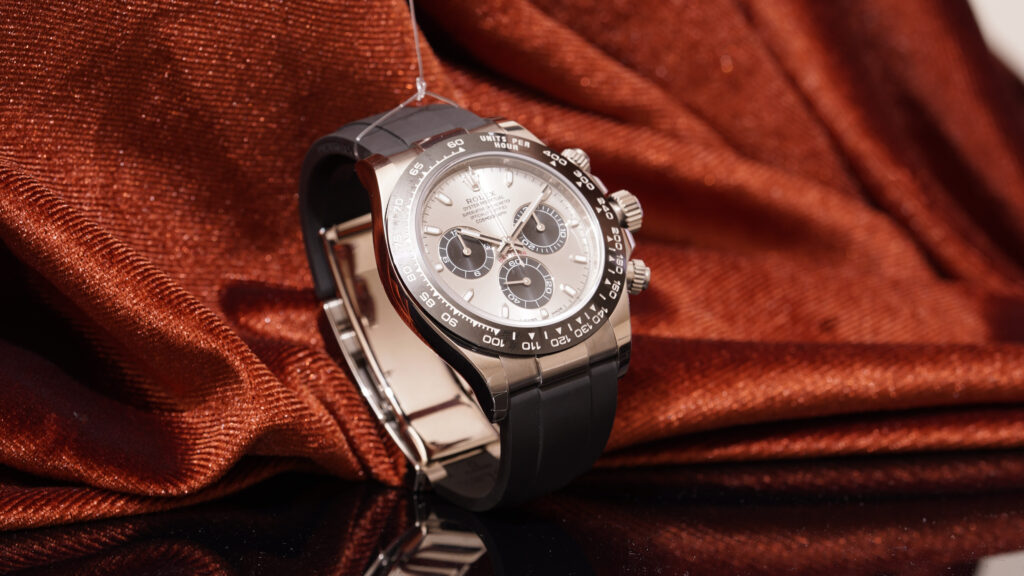
Between 1970 and 1971, Rolex introduced a quartet of new Cosmograph Daytona references, each equipped with the novel calibre 727, all housed within a 37 mm case.
Among these references, the 6262 and 6264 models stood out. Reference 6262 featured push-down buttons with a metal bezel, while reference 6264 sported a black plastic bezel.
This particular lineup was in production from 1970 to 1972 and showcased dials available in either white or black, accentuated by sub-dials in a contrasting hue.
On the other hand, references 6263 and 6265 took a different route by reintroducing screw-down push buttons. Reference 6263 came with a black plastic bezel, while reference 6265 featured a metal bezel.
These models were offered in stainless steel and gold and remained in production from 1971 to 1987.
A notable advancement in this series was incorporating screw-down push buttons and a more oversized winding crown, significantly enhancing waterproofing capabilities and elevating it from 50 to an impressive 100 meters.
4. 2000: Rolex Daytona Cosmograph Debut in Baselworld
The eagerly anticipated Rolex Daytona Cosmograph collection, featuring the advanced Calibre 4130 movement, made its long-awaited debut at the Baselworld exhibition in March 2000.
The new models in the 116500 series all shared a 40 mm case diameter, which was slightly slimmer than their predecessors.
This release signaled the arrival of a genuine in-house movement for the Rolex Daytona, known as the Caliber 4130. This vertically integrated, vertical clutch chronograph movement was, and still is, a marvel of engineering, designed with both durability and ease of future servicing.
One notable improvement was reconfiguring the sub-dials, simplifying the movement’s gear train, and enhancing reliability.
Additionally, this streamlined design allowed for the installation of a larger mainspring barrel, offering the watch an extended power reserve of 72 hours.
5. 2013: Rolex Daytona 50th Anniversary
In commemoration of the 50th anniversary of the Daytona in 2013, Rolex introduced a remarkable timepiece – a solid platinum version of their iconic chronograph, distinguished by a chocolate brown ceramic bezel.
This limited-edition release was a testament to the watch’s enduring legacy and garnered attention for its luxurious materials and unique design.
Nonetheless, Rolex’s decision to craft the ref. 116500LN with stainless steel instead of platinum ensured a significantly more accessible price point.
This choice resonated with watch enthusiasts worldwide, and upon its launch, the ref. 116500LN quickly became the coveted and sought-after timepiece of the year, making it a must-have addition to any watch collection.
The Classic Paul Newman Dial
From 1972 until his passing in 2008, the iconic movie star Paul Newman was frequently captured with a Rolex Daytona adorning his wrist.
It was with a reference 6263 that he first ventured into the world of Rolex Daytona watches, featuring a black dial and white sub-dials, notably a standard dial and not the “exotic” variant. This initial encounter marked the genesis of his enduring association with Rolex.
Interestingly, during the production era of reference 6239, Rolex introduced the distinctive and now beloved “exotic dials.” These dials would go on to grace various other vintage Daytona references over the years.
The story of these exotic dials takes an intriguing turn, thanks to the well-documented presence and ownership of the legendary Paul Newman.

Initially considered less desirable, they eventually acquired the name “Paul Newman” dials. This transformation led to a significant increase in their desirability and value compared to their standard dial counterparts.
Fast forward to the present day, and the Paul Newman Daytona stands as a highly coveted timepiece, commanding remarkable prices.
It’s estimated that approximately one out of every 20 vintage Daytona watches featured a Paul Newman dial, and many of these have had their dials replaced with standard ones during repairs or routine servicing.
This scarcity factor significantly contributes to the immense demand for these watches and the premium prices they now command.
Explore Authentic Rolex Daytona Collection at Luxehouze
Given its celebrated history, it’s natural to have your sights set on a Rolex Daytona. You’re in luck because Luxehouze, a luxury goods marketplace, offers a comprehensive selection of watches, all guaranteed 100% authentic and available at the most competitive prices.
Discover the entire Rolex collection, including the iconic Daytona, on the Luxehouze online platform, or you can pay a visit to the Luxehouze Jakarta Boutique, conveniently situated in Prosperity Tower, unit 8AF, SCBD, South Jakarta. Your journey to owning a Rolex Daytona begins here!
